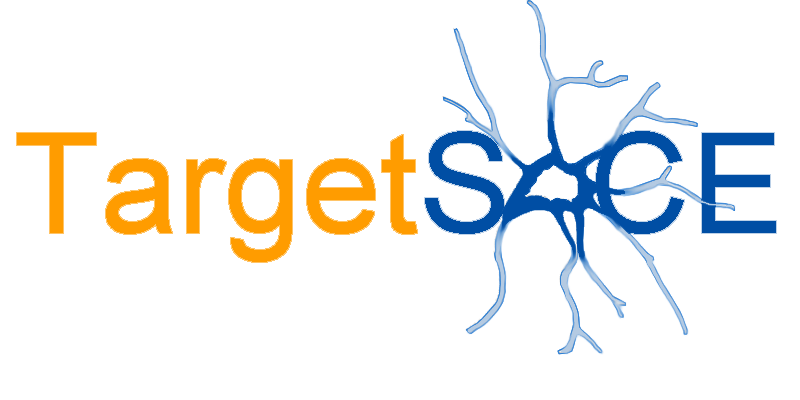
“Pathways of Store-Operated Calcium Entry (SOCE) as a novel
therapeutic target in neurodegenerative diseases”
TargetSOCE
ERA.Net RUS
Linking Russia to the ERA: Coordination of MS/AC S&T programmes
towards and with Russia
Pilot Joint Call for Collaborative S&T Projects
Project Partners
Prof. Jacek Kuźnicki (Coordinator), International Institute of Molecular and Cell Biology (IIMCB), Laboratory of Neurodegeneration
Prof. Axel Methner, Johannes Gutenberg University Medical Center Mainz (UM Mainz), Department of Neurology
Prof. Elena Kaznacheyeva, Institute of Cytology of the Russian Academy of Sciences (IC RAS), Laboratory of Ionic Channels of Cell Membranes
Project Consultant
Prof. Ilya Bezprozvanny, University of Texas, USA
News
September, 30 2014
TargetSOCE accomplishment
On September, 30th, TargetSOCE project has come to an end. The final project reports were submitted to the Joint Call Secretariat, and to the partnering countries’ national agencies. TargetSOCE was initiated to expand partners’ knowledge about the role of Ca2+ signaling in neurodegenerative disease and to strengthen ties of the three laboratories involved. Both these goals were reached, the groups published together 4 publications in well-renown journals, exchanged personnel, and met on a regular basis. The published and unpublished results are the basis of future projects, which are already developed.
September, 30 2013
By the end of September 2013, the first TargetSOCE year has been accomplished and the intermediate report was submitted to the Joint Call Secretariat from this period.
March, 31 2013
By the end of March 2013, the first 6 months of the TargetSOCE was realized and the first interim report was submitted to and accepted by the Joint Call Secretariat from this period.
February, 15th 2013
TargetSOCE project kick-off meeting took place at IIMCB. View pictures from the Meeting.
Prof. Jacek Kuźnicki, the project coordinator, hosted partners from abroad: Prof. Elena Kaznacheyeva with two young team members Dr. Alexey Shalygin and Maria Ryazanstseva from the Institute of Cytology of the Russian Academy of Sciences, Saint Petersburg, Russia and Prof. Axel Methner with Dima Lisak and Teresa Schacht from the University Medical Center of Johannes Gutenberg-University of Mainz, Germany. The event was inaugurated by an open seminar delivered by Prof. Kaznacheyeva and her colleagues. Further, partners discussed their so far research progress and planned future tasks and activities. Guests had opportunity to learn more about IIMCB, visit its laboratories, equipment premises and zebrafish core facility. At the kick-off a TargetSOCE Scientific Board meeting was organized with remote participation of the project consultant, Prof. Ilya Bezprozvanny from the Southwestern Medical Center at Dallas, USA.
October, 7th 2012
TargetSOCE partners concluded Consortium Agreement specifying the relationship among the partners, especially concerning the organization of work between them, the management of the projects and the rights and obligations of the partners with regard to liability, access rights, dispute resolution, etc.
July, 7th 2012
The Umbrella Agreement between Joint Call Secretariat and IIMCB on behalf of the Project consortium was signed. The Umbrella Agreement is a general agreement setting up regulatory framework for horizontal issues related to the transnational funding of the collaborative TargetSOCE research project.
TargetSOCE in a nutshell
There are no effective drugs to cure or to delay the progression of Alzheimer’s and Huntington’s diseases. It is clear that new target proteins respective pathways need to be addressed. TargetSOCE will respond to it by targeting calcium (Ca2+) homeostasis as a potential site for new treatments as both diseases are accompanied by profound changes in the intracellular Ca2+ homeostasis. Partners will study three transgenic mouse models, compare them and observe whether changes are specific for a certain pathological mechanism or are general downstream effects of neurodegeneration. In TargetSOCE, Russian, German and Polish groups complement one other. The expected results are highly relevant to prevailing neurodegenerative diseases in aging societies.
General information / aims of the project
Alzheimer’s disease (AD) is a progressive neurodegenerative disorder histopathologically defined by the extracellular deposition of the amyloid-β peptide, intracellular hyperphosphorylated neurofibrillary tangles, and selective neuronal loss. Huntington’s disease (HD) is a hereditary neurodegenerative disease caused by expression of a polyglutamine stretch in the protein Huntingtin. There are no effective drugs neither to cure these diseases, nor to delay their progression. It is clear that new target proteins pathways need to be addressed. We propose to approach this problem by targeting calcium (Ca2+) homeostasis as a potential site for new treatments as both diseases are accompanied by profound changes in the intracellular Ca2+ homeostasis. We hypothesize that changes in the function or abundance of the Ca2+ machinery at the endoplasmic reticulum (ER) result in changes in Store-Operated Calcium Entry (SOCE) and that this initiates or propagates the neurodegenerative process in AD and HD. We then hypothesize that genetic or pharmacological manipulation of SOCE alters or even ameliorates the course of disease. Thus, our research objective is to verify these hypotheses by the specific aims:
1) To systematically determine changes in the amount and function of the major players of the ER Ca2+ machinery in the brain of different transgenic mouse models for AD and HD;
2) To determine the cell death susceptibility of primary neurons from transgenic mouse models for AD and HD in response to different stressors involved in the pathophysiology of the disease;
3) To develop and evaluate genetic and pharmacological tools to alter changes in Ca2+ homeostasis involved in these models.
We will study these aims in three transgenic mouse models overexpressing mutated Amyloid Precursor Protein, Presenilin1, or expanded Huntingtin. We will investigate changes in the expression of proteins relevant for the ER Ca2+ machinery and study Ca2+ handling of different organelles with its consequences for the intrinsic function of neurons, the propagation of electrical signals. We will develop the genetic and pharmacological tools needed to alter changes in Ca2+ homeostasis and study their effects on cell death and on electrophysiological function of neurons. These studies aim to clarify the role of SOCE in AD and HD. We expect changes in the amount and function of some ER Ca2+ players such as Ca2+ release channels, ER Ca2+ pumps or STIM proteins, which are ER sensor proteins that activate SOCE. Moreover, we expect to identify genetic or pharmacological tools to correct the dysregulated Ca2+ homeostasis. Direct comparison of different mouse models will reveal whether the observed changes are specific for a certain pathological mechanism or general downstream effects of neurodegeneration. In TargetSOCE Russian, German and Polish groups complement one another. The aim and expected results are highly relevant taken into account the prevalence of neurodegenerative diseases in aging societies.
Project tasks
Axel Methner lab, Mainz, Germany
Task 1: To determine the abundance of key proteins of the Ca2+ machinery in brains from transgenic mouse models for AD and HD
Task 2: To determine changes in the intracellular Ca2+ homeostasis of primary neurons from transgenic mice expressing mutant APP and expanded Huntingtin
Task 3: To determine cell death susceptibility of primary neurons from transgenic mouse models for AD and HD
Elena Kaznacheyeva lab, St. Petersburg, Russia
Task 4: To determine changes in the SOC and L-type currents of primary neurons from transgenic mice expressing expanded Huntingtin and mutant PS1.
Task 5: To determine the effect of genetic tools evaluated by JK and quinazoline-derived compounds on Ca2+ currents in HD and PS1 neurons
Task 6: To determine the target of quinazoline-derived compounds by knockdown of proteins upregulated in HD and PS1 neurons on SOC currents of primary HD and AD neurons
Jacek Kuznicki lab, Warsaw, Poland
Task 7: To determine changes in the intracellular Ca2+ homeostasis of primary neurons from mice expressing mutant PS1
Task 8: Identification of pharmacological and genetic tools modifying SOCE in neurons
Task 9: Analysis of Ca2+ homeostasis in cultured neurons from mouse models using selected shRNA or drug(s) affecting SOCE
Project budget
The overall implementation and administration of the project is assured by the Era.Net-Rus General Secretariat. However, the operational management and the financing was entrusted to national agencies/institutions of the countries which participate in the Era.Net-Rus initiative.
Thus, the TargetSOCE partners receive support from the following national institutions:
IIMCB - National Centre for Research and Development
IC RAS - Russian Academy of Sciences
UM Mainz - Federal Ministry for Education and Research in Germany (minor support)
Project duration
24 months: October, 1st 2012 – September, 30th 2014
Project management and contact
Project coordinator: Prof. Jacek Kuźnicki, This email address is being protected from spambots. You need JavaScript enabled to view it.
Project manager: Dorota Libiszowska, This email address is being protected from spambots. You need JavaScript enabled to view it.
Scientific Board: Prof. Jacek Kuźnicki, Prof. Axel Methner, Prof. Elena Kaznacheyeva, Prof. Ilya Bezprozvanny


